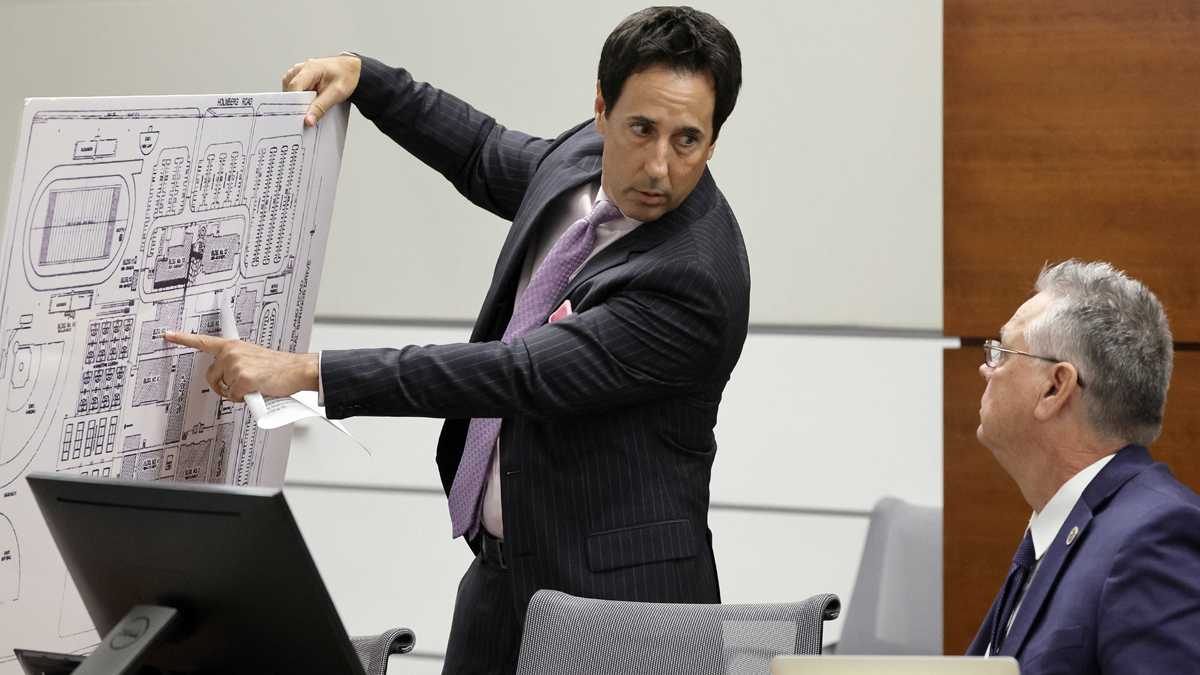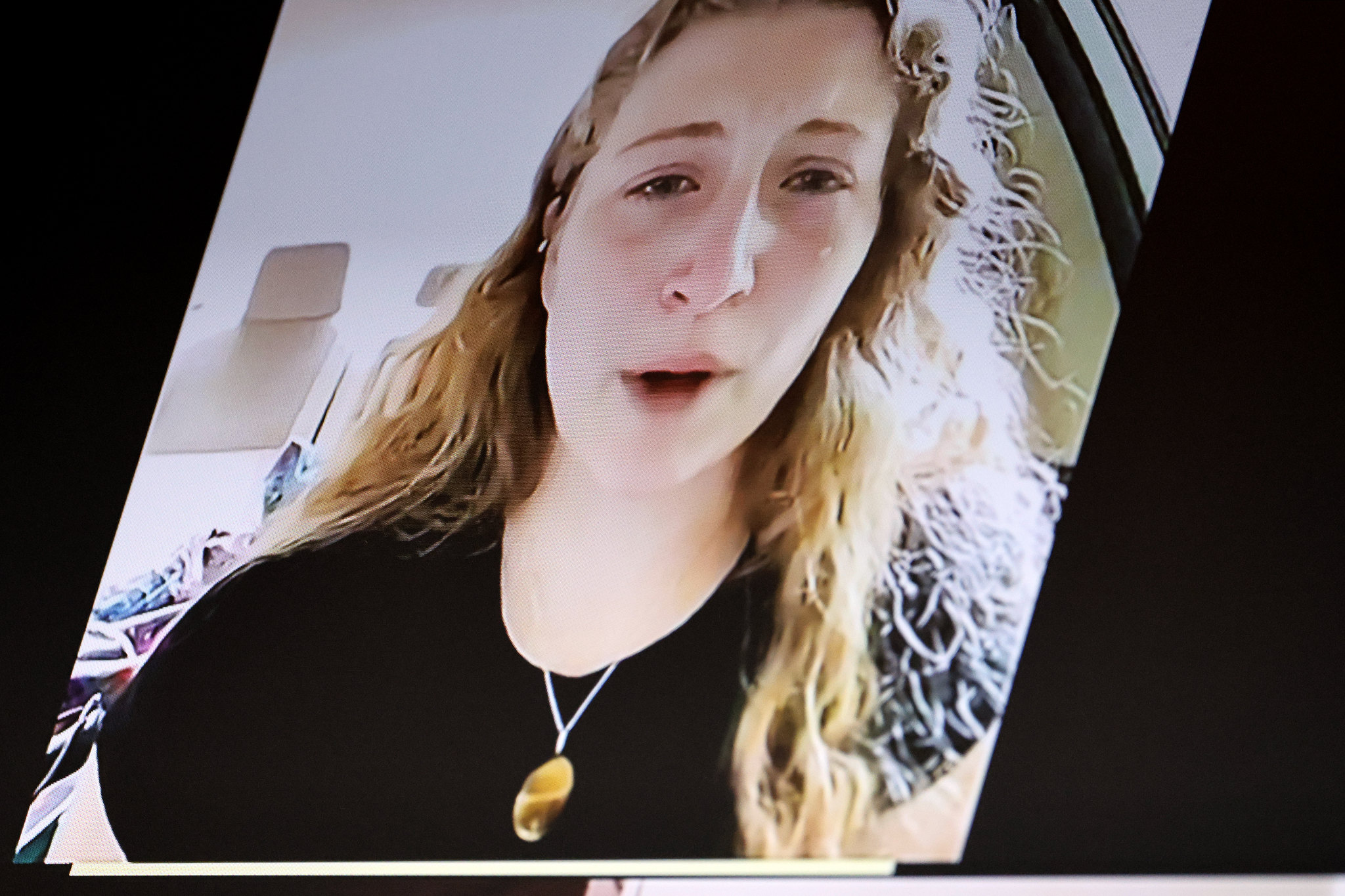A Broward sheriff’s deputy fled to safety during the 2018 Parkland school massacre, putting his own life ahead of the children he was charged with protecting and giving the gunman time to fatally shoot several victims, prosecutors told jurors Monday during closing arguments of his trial on child neglect charges.
Broward County Deputy Scot Peterson could have located and stopped Nikolas Cruz as he carried out his Feb. 14, 2018, attack inside the three-story 1200 building at Marjory Stoneman Douglas High School but instead of opening a door, looking in a window or seeking information from fleeing students, he chose to take shelter next to an adjoining building, prosecutor Kristen Gomes told the jury. That prevented him from confronting the gunman before he reached the third floor, where six of the shooter's 17 killings were committed.
“Choose to go in or choose to run? Scot Peterson chose to run,” Gomes said. “When the defendant ran, he left behind an unrestricted killer who spent the next four minutes and 15 seconds wandering the halls at his leisure. Because when Scot Peterson ran, he left them in a building with a predator unchecked.”
SCOT PETERSON TRIAL
Get South Florida local news, weather forecasts and entertainment stories to your inbox. Sign up for NBC South Florida newsletters.
But Peterson's attorney, Mark Eiglarsh, argued that Peterson is being made a “sacrificial lamb” for failures by elected officials and administrators. He said the evidence proves Peterson's insistence that the gunshots' echoes prevented him from pinpointing the gunman's location is the truth and Peterson did everything he could under the circumstances. Criticizing his actions now is “Monday morning quarterbacking” using facts that were unknown to Peterson in real time.
He said the only person responsible for what happened that day is “that monster” Cruz. He said two dozen students, teachers and others testified that they also could not pinpoint where the shots were coming from — some of them from inside the building where the shooting happened.
“This whole hearing-based prosecution is flawed and offensive,” Eiglarsh said. He said Peterson acted heroically during the shooting, staying put to transmit whatever information he had and would have charged into the building if he knew where the shooter was. But if he did that or went elsewhere without solid information and the shooter then killed others where Peterson had left, he would have been prosecuted for that.
“He was damned no matter what,” Eiglarsh said.
After the emotional closing arguments, jurors were given instructions and began deliberations.
Peterson, 60, is being tried for felony child neglect and other charges for the deaths and injuries on the third floor. He is not charged in connection with the deaths of 11 people killed on the first floor before he reached the building. It is the first time a U.S. law enforcement officer has been tried in connection with a school shooting.
Prosecutors, during their two-week presentation, called to the witness stand students, teachers and law enforcement officers who testified about the horror they experienced and how they knew where the gunman was. Some said they knew for certain the shots were coming from the 1200 building. Prosecutors also called a training supervisor who testified Peterson did not follow protocols for confronting an active shooter.
Eiglarsh during his two-day presentation called several deputies who arrived during the shooting and students and teachers who testified they did not think the shots were coming from the 1200 building. Peterson did not testify.
Eiglarsh has also emphasized the failure of the sheriff's radio system during the attack, which limited what Peterson heard from arriving deputies. Gomes said the radio system worked fine during the critical first minutes of the attack, with Peterson being the one with the best information as he was within feet of the building.
The jury will also have to decide whether Peterson was a “caregiver" to the juvenile students who died and were wounded on the third floor — a legal requirement for him to be convicted of child neglect. Florida law defines a caregiver as “a parent, adult household member or other person responsible for a child’s welfare.” Caregivers are guilty of felony neglect if they fail to make a “reasonable effort” to protect children or don’t provide necessary care.
Gomes said every parent who dropped their child off that morning expected Peterson to protect the students. Eiglarsh said Peterson was not responsible for feeding or clothing the students, so he was not their caregiver.
Security videos show that 36 seconds after the gunman's attack began, Peterson exited his office about 100 yards from the 1200 building and jumped into a cart with two unarmed civilian security guards. They arrived at the building a minute later.
Peterson got out of the cart near the east doorway to the first-floor hallway. The gunman was at the hallway’s opposite end, firing his AR-15-style semiautomatic rifle.
Peterson, who was not wearing a bullet-resistant vest, did not open the door. Instead, he took cover 75-feet away in the alcove of a neighboring building, his gun still drawn. He stayed there for 40 minutes, long after the shooting ended and other police officers had stormed the building.
Peterson faces up to nearly 100 years in prison if convicted, although because of his clean record a sentence anywhere near that length is highly unlikely. He could also lose his $104,000 annual pension. He had spent nearly three decades working at schools, including nine years at Stoneman Douglas. He retired shortly after the shooting and was then fired retroactively.
Cruz’s jury could not unanimously agree he deserved the death penalty. The 24-year-old former Stoneman Douglas student was then sentenced to life in prison.



